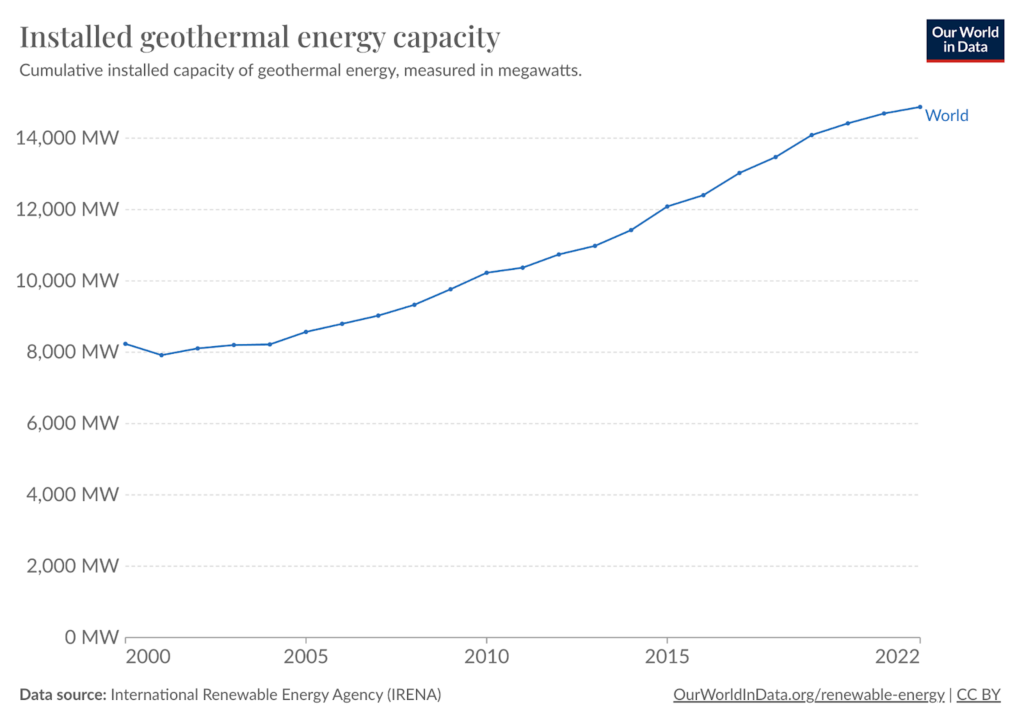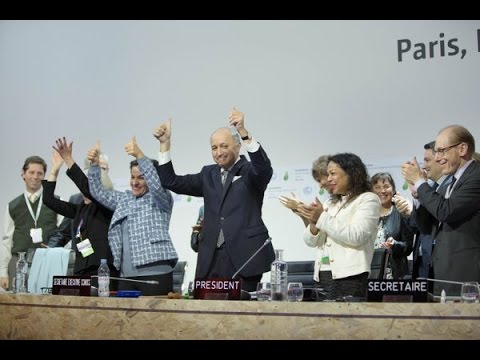The History of Geothermal Energy: The Big Picture
Affiliate Disclosure
Hey fellow impactful ninja ?
You may have noticed that Impactful Ninja is all about providing helpful information to make a positive impact on the world and society. And that we love to link back to where we found all the information for each of our posts.
Most of these links are informational-based for you to check out their primary sources with one click.
But some of these links are so-called "affiliate links" to products that we recommend.
Why do we add these product links?
First and foremost, because we believe that they add value to you. For example, when we wrote a post about the environmental impact of long showers, we came across an EPA recommendation to use WaterSense showerheads. So we linked to where you can find them. Or, for many of our posts, we also link to our favorite books on that topic so that you can get a much more holistic overview than one single blog post could provide.
And when there is an affiliate program for these products, we sign up for it. For example, as Amazon Associates, we earn from qualifying purchases.
What do these affiliate links mean for you?
First, and most importantly, we still only recommend products that we believe add value for you.
When you buy something through one of our affiliate links, we may earn a small commission - but at no additional costs to you.
And when you buy something through a link that is not an affiliate link, we won’t receive any commission but we’ll still be happy to have helped you.
What do these affiliate links mean for us?
When we find products that we believe add value to you and the seller has an affiliate program, we sign up for it.
When you buy something through one of our affiliate links, we may earn a small commission (at no extra costs to you).
And at this point in time, all money is reinvested in sharing the most helpful content with you. This includes all operating costs for running this site and the content creation itself.
What does this mean for me personally?
You may have noticed by the way Impactful Ninja is operated that money is not the driving factor behind it. It is a passion project of mine and I love to share helpful information with you to make a positive impact on the world and society. However, it's a project in that I invest a lot of time and also quite some money.
Eventually, my dream is to one day turn this passion project into my full-time job and provide even more helpful information. But that's still a long time to go.
Stay impactful,
Experts estimate that we could supply humanity’s total energy needs for the next 2 million years with only 0.1% of the heat content of the Earth. Geothermal energy uses heat from the earth’s core and produces little to no waste products or carbon dioxide (CO2) emissions. So, we had to ask: What is the history of geothermal energy?
Geothermal energy began in ancient times with hot springs used to heat bathwater. Then, the invention of dry/flash steam and binary cycle power plants in the 1960s kickstarted the geothermal industry. Installed capacity has increased steadily since 2000, yet geothermal remains relatively untapped.
Keep reading to learn how geothermal energy came to be, who and what pioneered its development, how effective it has been thus far, and what the future of geothermal could entail.
Here’s the History of Geothermal Energy in a Nutshell
Geothermal energy is produced when radioactive materials in the rock and fluid of the earth’s core decay. Drilling down to hot water reservoirs up to a mile below the surface creates steam that rotates a turbine, which spins a generator to generate electricity.
“Geothermal: involving or produced by the heat that is inside the earth”
Cambridge Dictionary
Geothermal is found along major tectonic plate boundaries where volcanoes are located. Because the Earth has an almost unlimited supply of heat generated by its core, and the water extracted from the reservoirs can be recycled via re-injection into the ground, geothermal energy is a renewable energy source.
Geothermal energy has gone through three distinct development phases in its development:
- Early market formation and innovation: The early history of geothermal energy dates back to ancient times when the Greeks and Romans used baths heated by naturally occurring hot springs.
- Consolidation and strengthening: The invention of the world’s first dry steam, geothermal power plant kickstarted the modern geothermal industry. The industry developed with the inventions of the flash steam and binary cycle geothermal power plants, which improved the efficiency and energy generation of dry steam plants.
- Mainstreaming: The commercialization of geothermal heat pumps and the Energy Crisis in the 1970s sparked interest in geothermal energy and spurred technological advances. The establishment of the International Energy Agency, the International Geothermal Association, and the Global Geothermal Alliance have helped to shape the industry.
| Geothermal Energy Milestones | Historical Event |
| Initial start | The early history of geothermal energy dates back to ancient times when the Greeks and Romans used baths heated by naturally occurring hot springs. |
| Milestones in geothermal energy development | 1818: François Jacques de Larderel became the first to harness energy for industrial use by extracting boric acid from hot springs. 1830: Asa Thompson became the first to commercialize geothermal energy by charging people one dollar to use her baths that were fed by hot springs. 1904: Piero Ginori Conti became the first to use geothermal energy to power a small generator to illuminate several light bulbs. 1907: The Hot Lake Hotel became one of the first buildings in the world to use geothermal energy as its primary heat source. 1913: The world’s first commercial, dry steam power plant was constructed in Italy. 1948: The world’s first commercial geothermal heat pump became operational. This pioneered the large-scale commercial application of heat pumps. 1960: The Geysers Geothermal Complex, the world’s largest geothermal power plant, was constructed North of San Francisco, California (US). 1963: The Wairākei Power Station was opened in New Zealand. It was the second geothermal power plant in the world and the first flash steam-powered plant. 1967: The world’s first geothermal, binary cycle power plant became operational in Russia. This binary cycle design uses lower-temperature geothermal resources, meaning it is more efficient and can be deployed at more locations worldwide. 1970s: The Energy Crisis of 1970, caused by disruptions to the supply chain via wars in the Middle East, increased interest in geothermal energy as a source of heat. 2006: The Chena Hot Springs Resort installed the world’s first plant to produce geothermal energy at temperatures below the boiling point of water. This expanded the geographic area where geothermal energy can be extracted. |
| Current status | Currently, geothermal energy represents 0.5% of the global renewable electricity market. We produced 95,251 GWh of energy from 14,696 MW of installed geothermal capacity in 2021. |
| Future outlook | The future of geothermal energy will be heavily influenced by ambitious government targets, policy support, increasing competitiveness of geothermal energy companies, and decreasing the upfront costs associated with installing geothermal technologies. |
| Key policy developments | 1974 – The International Energy Agency (IEA) 1988 – The International Geothermal Association (IGA) 1997 – International Energy Agency Geothermal Technical Cooperation Programme (IEA GTCP) 1998 – The European Geothermal Energy Council (EGEC) 2009 – The International Renewable Energy Agency (IRENA) 2015 – The Global Geothermal Alliance (GGA) 2015 – The Paris Climate Agreement |
Understanding geothermal energy’s history can provide insight into how it has evolved into the energy source it is today.
When and How Did Geothermal Energy Get Started
We have been using geothermal energy, in the form of natural pools and hot springs, for centuries. The Greeks and the Romans used baths heated by hot springs, and instances of geothermal space heating in the city of Pompeii have been documented as far back as the first century AD. Evidence was also discovered that Native Americans used geothermal energy in cooking applications as early as 10,000 years ago.
How Has Geothermal Energy Developed Over Time
Geothermal can play an important role in the global energy transformation and help transition away from fossil fuels because it has a very low carbon footprint when compared to fossil fuels.
What Are Milestones in Geothermal Energy Development
The invention of the world’s first geothermal power plant kickstarted the modern geothermal industry, which has today grown into a $60 billion industry.
1818: French engineer François Jacques de Larderel became the first to harness energy for industrial use. He invented a new way to extract boric acid from hot springs.
1830: Asa Thompson became the first to commercialize geothermal energy by charging people one dollar to use her baths that were fed by hot springs.
1904: Italian scientist Piero Ginori Conti became the first to use geothermal energy to power a small generator, which illuminated several light bulbs.
1907: The Hot Lake Hotel, one of the first buildings in the world to use geothermal energy as its primary heat source, was constructed in Oregon, US.
1913: The world’s first commercial, dry steam, geothermal power plant was constructed in Italy. Dry steam plants are the oldest forms of geothermal power plants and would be the basis on which future designs were developed.
1948: The world’s first commercial geothermal heat pump became operational in Oregon (US). This pioneered the large-scale commercial application of heat pumps.
1960: The Geysers Geothermal Complex, the world’s largest geothermal power plant, was constructed North of San Francisco, California (US). The complex sits on a 30-square-mile site and includes 22 power plants powered by steam from over 350 geothermal wells.
1963: The Wairākei Power Station was opened in New Zealand. It was the second geothermal power plant in the world and the first flash steam-powered plant. Flash steam plants are still the most common type of geothermal power plant operating today.
1967: The world’s first geothermal, binary cycle power plant became operational in Russia. The binary cycle design uses lower-temperature geothermal resources, meaning it can be deployed at more locations worldwide.
1970s: The Energy Crisis of 1970, caused by disruptions to the supply chain via wars in the Middle East, increased interest in geothermal energy as a source of heat.
2006: The Chena Hot Springs Resort, in Alaska (US), installed the state’s first geothermal power plant. The plant was the first in the world to produce geothermal energy at temperatures below the boiling point of water. This expanded the geographic area where geothermal energy can be harvested.
The 2000s have seen advancements in research and development of geothermal energy, with support for geothermal to make up a greater share of the renewable energy market.
How Has the Geothermal Energy Market Developed Recently
Since 2000, geothermal energy has seen steady increases in terms of electricity generation and installed capacity.
2019: Global geothermal electricity generation was 91,980 GWh and the installed capacity was 14,089 MW.
2020: Global geothermal electricity generation was 94,645 GWh and the installed capacity was 14,417 MW.
2021: Global geothermal electricity generation was 95,251 GWh and the installed capacity was 14,696 MW.
2022: Global geothermal installed capacity was 14,877 MW.
What Is the Present Status of Geothermal Energy
Installed geothermal capacity reached a record high of 14,877 megawatts (MW) in 2022.

The US has 2,643 MW of installed geothermal energy capacity, the most in the world. They are closely followed by Indonesia, the Philippines, Turkey, New Zealand, and Mexico.

Turkey has experienced a 9,296% increase in installed geothermal capacity, from 18 MW in 2000 to 1,691 MW in 2022. In the past decade, they have drilled over 10,000 geothermal wells and increased their number of geothermal power plants from 3 to 49.
Kenya has experienced a 1,536% increase in installed geothermal capacity, from 58 MW in 2000 to 949 MW in 2022. Easy access to geothermal sources has led to Kenya becoming an expert in the geothermal field and encouraging neighbors Ethiopia and Djibouti to begin developing their geothermal sources.
Global electricity generation from geothermal energy reached an all-time high of 95,000 gigawatt hours in 2021. However, geothermal still represents only 0.5% of the global renewable electricity market as of 2022.

The US is the world leader in geothermal electricity generation. 7 US states (out of 50) were responsible for generating roughly 17 billion kilowatt hours (kWh) of electricity, or 0.4% of total US utility-scale electricity generation, in 2022. The state of California generated almost 70% of US geothermal electricity followed by 24% from the state of Nevada.
In terms of carbon emissions, on a life-cycle basis, geothermal energy emits 38 grams of CO2 equivalent per kWh of electricity produced, the 6th lowest out of all fuel types.

Throughout its life cycle, geothermal energy produces 1/6th the CO2 of a natural gas power plant. In the US alone, annual geothermal energy resources effectively offset the emission of 4.1 million metric tons of CO2, 200,000 tons of SO2, 80,000 tons of nitrogen oxides, and 110,000 tons of particulate matter, when compared to conventional coal-fired plants.
How Will the Future of Geothermal Energy Look Like
The future of geothermal energy will be heavily influenced by ambitious government targets, policy support, increasing competitiveness of geothermal energy companies, and decreasing the upfront costs associated with installing geothermal technologies.
How Geothermal Energy Will Likely Develop in the Future
One of the most prominent, emerging geothermal technologies is enhanced geothermal systems (EGS), also known as human-made geothermal energy. An EGS is used in areas where the rock is not permeable enough for fluid to circulate. It involves injecting fluids underground to open up pre-existing fractures, allowing fluids to circulate through the fractured rock. The circulating fluids heat up and then are pumped up to the surface where they are used to generate electricity.
The future of geothermal energy also involves a switch from dry steam to binary cycle geothermal plants. Binary cycle plants transfer the heat from geothermal hot water to a second liquid, which makes them more sustainable, efficient, and environmentally friendly.
For example, nearly 70% of the geothermal capacity constructed in the US before 2000 utilized steam-powered technology. But 90% of the newer plants that were built after 2000 now utilize binary cycle technology.
In terms of global development, Turkey and Kenya are predicted to continue to lead the world in terms of new geothermal capacity additions. Kenya’s economic development plan, Kenya Vision 2030, has laid out a goal of achieving at least 3,000 MW of geothermal production capacity by 2030. If all of their projects are completed, Kenya would jump to 4th in the world for geothermal energy and would generate over half of the country’s energy from geothermal.
What Policies Are Put in Place to Support Geothermal Energy Usage
The most well-known piece of legally binding, international climate mitigation legislation is The Paris Agreement, the goal of which is to limit global warming to below 2 degrees Celsius (C), preferably to 1.5C, compared to pre-industrial levels.
The Paris Agreement specifically notes a transition towards clean energies, such as geothermal energy, as being a critical part of meeting these goals.
Check out the highlights of the 2015 COP21 directly from the UN Climate Change channel:
In addition, The International Energy Agency’s (IEA) Net Zero Emissions by 2050 Scenario is one framework for the global energy sector to achieve net zero CO2 emissions by 2050 and universal energy access by 2030.
Because of this, there are many global and country-specific geothermal energy policies and organizations aimed at meeting the 2050 net zero scenario, including:
- 1974 – The International Energy Agency (IEA): The IEA was founded in response to the major oil disruptions in 1974. It promotes international energy cooperation and is made up of 31 member countries.
- 1988 – The International Geothermal Association (IGA): The IGA is a leading, global organization that promotes geothermal energy as a vital part of the transition away from fossil fuels. Today, the IGA has over 5,000 members and 30 affiliate organizations.
- 1997 – International Energy Agency Geothermal Technical Cooperation Programme (IEA GTCP): The GTCP was established as part of the International Energy Agency Technology Collaboration Programme as a framework to promote international collaboration and networking for all things geothermal energy.
- 1998 – The European Geothermal Energy Council (EGEC): The EGEC was founded to promote and develop geothermal energy in Europe and worldwide. Today, the EGEC has more than 120 members from 28 countries.
- 2009 – The International Renewable Energy Agency (IRENA): IRENA was founded as a global intergovernmental agency focused on scaling renewable energy. It is comprised of 167 member countries as well as the European Union.
- 2015 – The Global Geothermal Alliance (GGA): The GGA was established by IRENA as a platform to enhance discussion, cooperation, and coordination between the geothermal industry, policymakers, and stakeholders. Today, the GGA has 52 member countries.
What Are Currently the Different Types of Geothermal Energy
The three main types of geothermal power plants are:
- Dry Steam: Wells are drilled into underground reservoirs of steam. The steam is piped directly from the well to the power plant where it powers turbines and generators.
- Flash Steam: The most common type of geothermal power plant. Very hot (360 degrees Fahrenheit, 182 degrees Celsius) water flows up through wells towards the surface under its own pressure. As it reaches the surface, some of the water boils into steam. The steam is then separated from the water and is then used to power turbines and generators at the power plant.
- Binary Steam: Wells are drilled into underground reservoirs of hot water (225-360 degrees Fahrenheit, 107-182 degrees Celsius). The heat from the water is used to boil a working fluid, an organic compound with a low boiling point. This working fluid is vaporized into steam which is then used to power turbines and generators at the power plant. The water is then injected back into the ground where it is reheated and can be used again. There are virtually no air emissions during this process because the working fluid and water are kept separate during the process.
All three types of geothermal power plants harvest water from the earth’s core in the same manner, by drilling down to reservoirs and extracting the hot water to produce steam, turn turbines, and power generators to create electricity.
Final Thoughts
The early history of geothermal energy dates back to ancient times when the Greeks and Romans used baths heated by naturally occurring hot springs. Instances of geothermal space heating in the city of Pompeii have also been documented as far back as the first century AD.
The invention of the world’s first dry steam geothermal power plant kickstarted the modern geothermal industry. The industry further developed with the inventions of the flash steam and binary cycle geothermal power plants, which improved on the efficiency and energy generation of dry steam plants.
Currently, the US is the world leader in geothermal energy with Turkey and Kenya having some of the highest increases in installed capacity. Despite seeing advances, geothermal still only makes up less than 1% of our global renewable electricity market.
The commercialization of geothermal heat pumps and the Energy Crisis in the 1970s sparked interest in geothermal energy and spurred technological advances. The establishment of the International Energy Agency, the International Geothermal Association, and the Global Geothermal Alliance have helped to shape the industry.\
Stay impactful,

Sources
- Vox: Geothermal energy is poised for a big breakout
- TWI: What is Geothermal Energy? How Does it Work?
- National Renewable Energy Laboratory: Geothermal Electricity Production Basics
- National Oceanic and Atmospheric Administration: What are the different types of plate tectonic boundaries?
- Impactful Ninja: Renewable Energy Explained: All You Need to Know
- Britannica: Geothermal energy – Renewable, Heat, Power
- GlobeNewswire: Geothermal Energy Market Size Worth USD 95.82 Billion, Globally, by 2029 at a CAGR of 6.3%
- Alberta’s Energy Heritage: Geothermal Energy throughout the Ages – Electricity & Alternative Energy
- Paléo-Energétique: François Larderel geothermal researches
- Conserve Energy Future: History of Geothermal Energy (And Emergence Over the Years)
- US Department of Energy: Energy Saver History Timeline: Geothermal Energy
- Massachusetts Institute of Technology: The Geothermal City – History
- Energy4me: History
- Statista: Largest geothermal plants globally 2021
- Engineering NZ: Wairākei Geothermal Power Development
- US Department of Energy: Electricity Generation
- ScienceDirect Topics: Binary Cycle – an overview
- Federal Reserve History: Oil Shock of 1973–74
- Arctic Council Working Group: Chena Hot Springs, Chena, AK, USA | Arctic Contaminants Action Program
- International Renewable Energy Agency: Geothermal energy
- Our World in Data: Installed Geothermal Energy Capacity
- US Energy Information Administration: Use of geothermal energy
- Our World in Data: Installed geothermal energy capacity, 2022
- The United Nations Educational, Scientific and Cultural Organization: How Turkey became a role model for geothermal energy within a decade
- Reuters: Kenya steps up as global geothermal powerhouse
- International Renewable Energy Agency: Global geothermal market and technology assessment
- International Renewable Energy Agency: Geothermal Electricity Generation
- World Nuclear Association: Carbon Dioxide Emissions From Electricity
- US Department of Energy: Geothermal FAQs
- National Renewable Energy Laboratory: Buried Treasure: The Environmental, Economic, and Employment Benefits of Geothermal Energy. Geothermal Technologies Program
- US Department of Energy: Enhanced Geothermal Systems
- US Energy Information Administration: Geothermal power plants
- Kenya Vision 2030: Homepage
- The United Nations Framework Convention on Climate Change: The Paris Agreement
- International Energy Agency: Net Zero Emissions by 2050 Scenario (NZE) – Global Energy and Climate Model – Analysis
- The International Energy Agency: Homepage
- The International Geothermal Association: Homepage
- International Energy Agency Geothermal Technical Cooperation Programme: Homepage
- The European Geothermal Energy Council: Homepage
- The International Renewable Energy Agency: Homepage
- The Global Geothermal Alliance: Homepage
- National Renewable Energy Laboratory: Geothermal Electricity Production Basics





